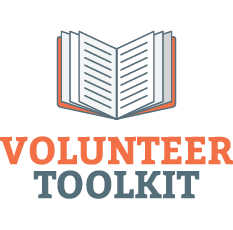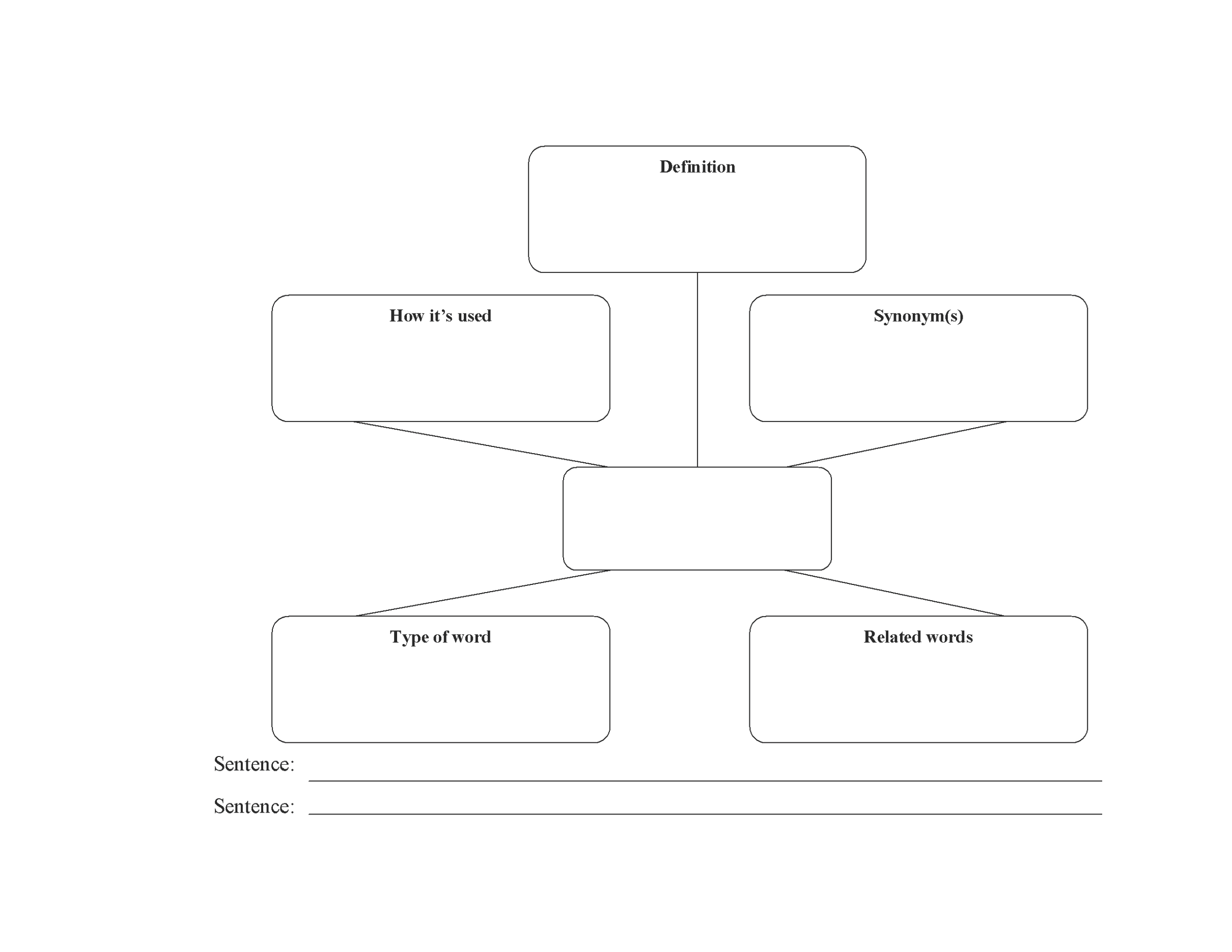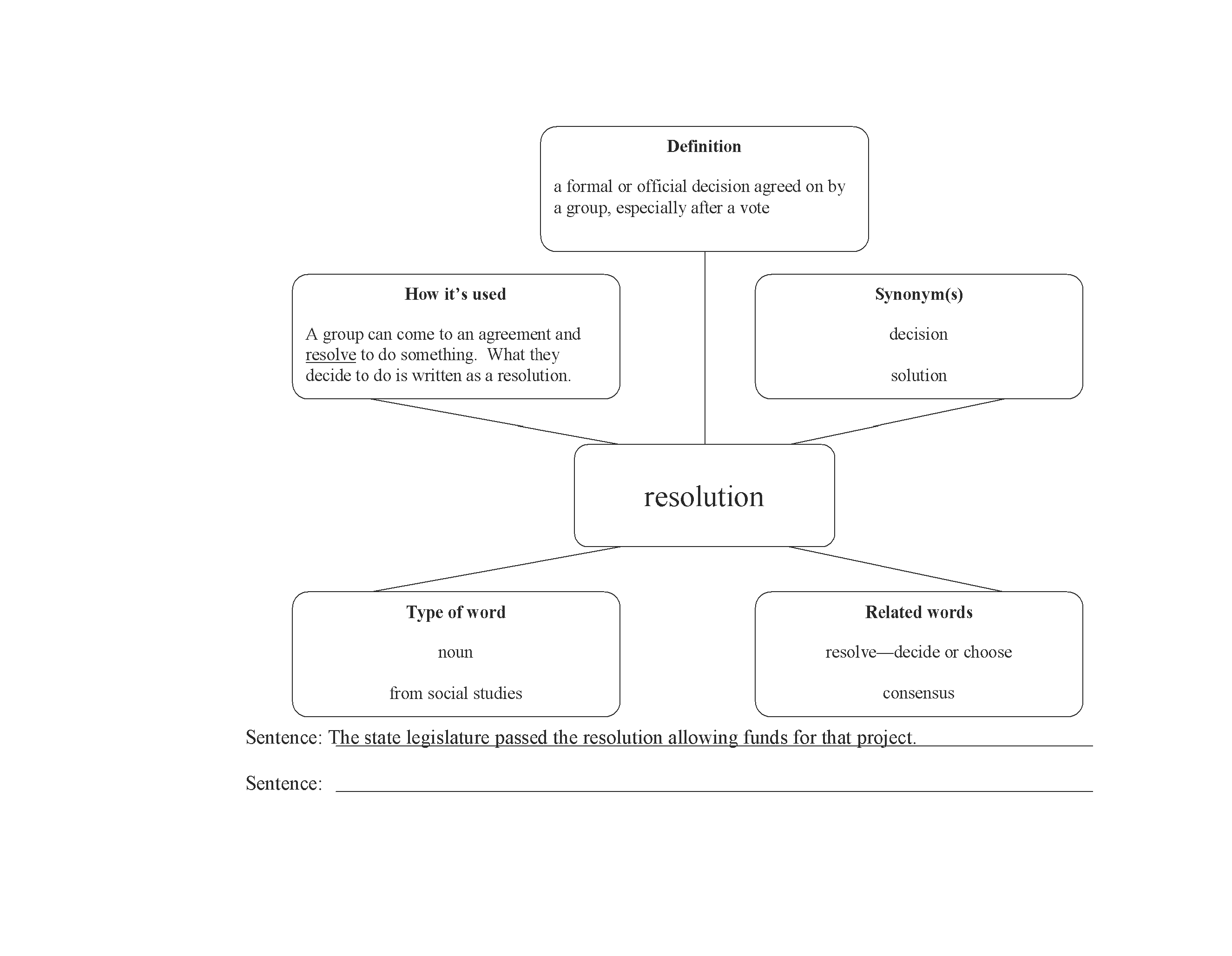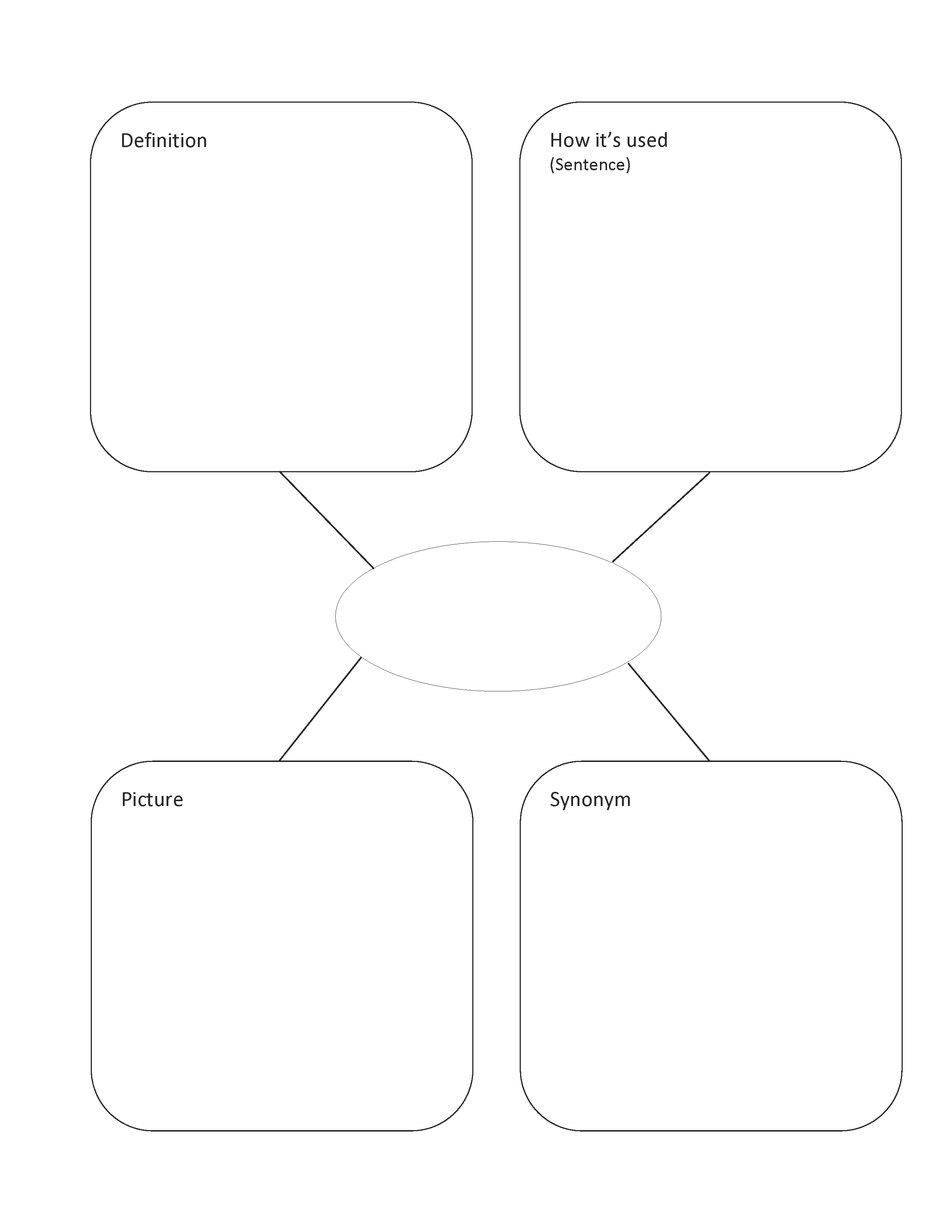Getting Started with Vocabulary
Understanding the meaning of words is vital to reading comprehension. We use our oral vocabulary when we’re reading because after we identify printed words (perhaps by “sounding them out”) we make an immediate connection to their meanings—if the words are in our oral vocabulary. If we don’t know the meaning of a word, “sounding it out” doesn’t result in comprehension.
When introducing or encountering an unfamiliar word, provide a description, explanation, or example of the new term. Helping students learn to use a dictionary is important, but be sure to concentrate on the definition that matches the way the word was used in the text. You probably know from your own experiences with a dictionary that sometimes it is difficult to understand the definitions that are given. Something that is helpful is to put the definition in “student-friendly” language. An easy way to think about “student-friendly” language is to use the words “describes,” “someone,” or “something” in your definition or explanation of the word. Let’s consider some examples.
If you are reading a story with a student and you come to the word “meander.” The student asks the meaning of the word. You might say…“If someone meanders around the mall, he is walking around without a definite destination in mind. When you know where you are going and head straight there you are not meandering.” If you are asked to explain the word “brusque” you might say…“The word ‘brusque’ describes the way someone answers a question by using very few words. It may seem rude, but is not really intended to be.”
It is a good idea to ask the student to restate the description, explanation, or example in his own words. You might also ask him to draw a picture representing the word. This seems to help students make a connection to the word and hopefully, to remember it!
Word Maps
One thing you may find helpful with the students you work with is the use of a word map. Word maps can be simple with the word, its definition, picture and sample sentence or more complex with synonyms, antonyms, and parts of speech. A word map will give the students an organized way to interact with the word. Giving students the opportunity to write and draw provides a way to help embed the word in memory.
Students are far more likely to remember vocabulary words when only a few are taught in a given lesson and when something visual, kinesthetic or tactile is involved. Ideas include bringing in an object or a picture from google images, drawing a picture (or better yet, having the student draw), acting out the word, or making up a rhyme or song that defines the word.
Have fun and help the students love words!
Check Your Knowledge
d



